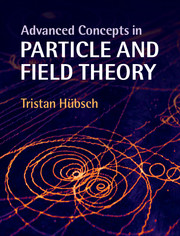Book contents
- Frontmatter
- Epigraph
- Contents
- Preface
- I Preliminaries
- II The Standard Model
- III Beyond the Standard Model
- 8 Unification: the fabric of understanding Nature
- 9 Gravity and the geometrization of physics
- 10 Supersymmetry: boson–fermion unification
- 11 Strings: unification of all foundations of reality
- IV Appendices
- A Groups: structure and notation
- B A lexicon
- C A few more details
- References
- Index
11 - Strings: unification of all foundations of reality
from III - Beyond the Standard Model
- Frontmatter
- Epigraph
- Contents
- Preface
- I Preliminaries
- II The Standard Model
- III Beyond the Standard Model
- 8 Unification: the fabric of understanding Nature
- 9 Gravity and the geometrization of physics
- 10 Supersymmetry: boson–fermion unification
- 11 Strings: unification of all foundations of reality
- IV Appendices
- A Groups: structure and notation
- B A lexicon
- C A few more details
- References
- Index
Summary
The theory (i.e., theoretical system) of strings was already mentioned in Chapter 1 and Section 10.2, and in a very fleeting way also in the historical review in Chapter 2 – which must be supplemented before we turn to even a non-technical review of the theoretical system as well as some of the lessons from this research. The historical review will therefore introduce a few new terms, which will thereafter be clarified in the remainder of this chapter.
By now, there exist complete and pedagogically well organized texts on string theory [225, 224, 417, 483, 434, 124, 594, 398, 298, 46, 312, 251, 510], lecture notes [424, 381, 432, 170, 430], in relation to Yang–Mills gauge theories [439], recent reviews [373] and even popular books at the “guide for complete idiots” level [375, 358, 299]. This, final chapter – and the entire book – can then possibly serve only as an aperitif and prerequisite to most of this growing literature.
11.1 Strings: recycling, recycling…
Only about four decades old, the string theoretical system is based on the fundamental idea that the elementary particles – the basic building blocks of Nature and the Democritean ideal indivisibles – are not point-like. As we have concluded (with the benefit of hindsight!) already in Section 1.3.3, there exist natural limits to the tininess of elementary objects, and the “material point” is merely an idealization. For students who have successfully completed a course in electrodynamics, it will be natural to regard these basic building blocks as 1-dimensional elementary objects in the next order of approximation (multipole expansion). Except, unlike a rigid dipole (rigid bodies being a non-relativistic idealization), strings are relativistic one-dimensional objects that possess “internal” dynamics, which essentially stems from their 1-dimensionality. However, these fundamental strings do not consist of anything “more elementary,” and it is precisely the dynamics of this irreducible non-point-likeness that produces the unexpected complexity of the string theoretical system as well as many other properties with no precedent in the physics of elementary particles.
- Type
- Chapter
- Information
- Advanced Concepts in Particle and Field Theory , pp. 397 - 448Publisher: Cambridge University PressPrint publication year: 2015

